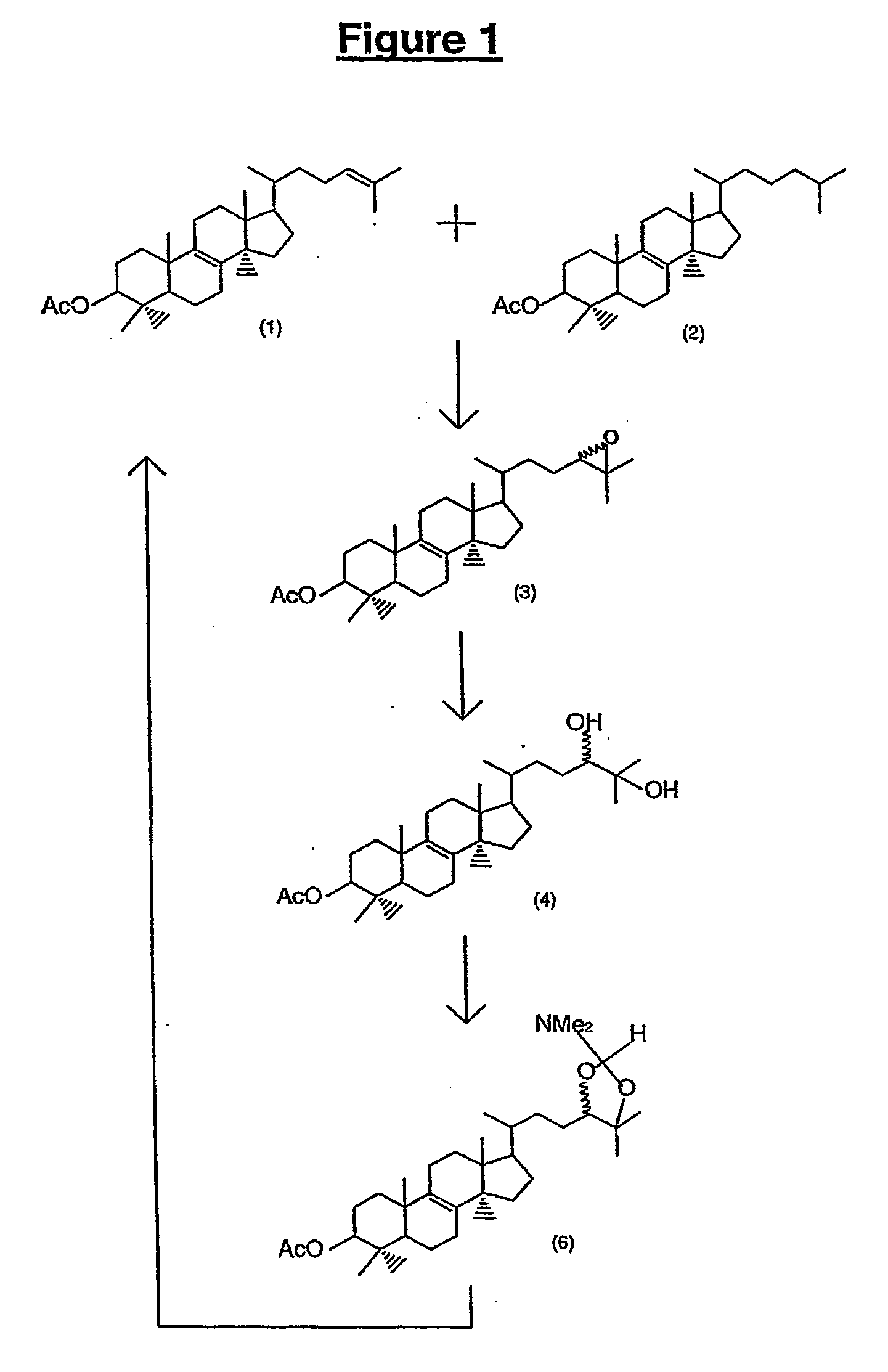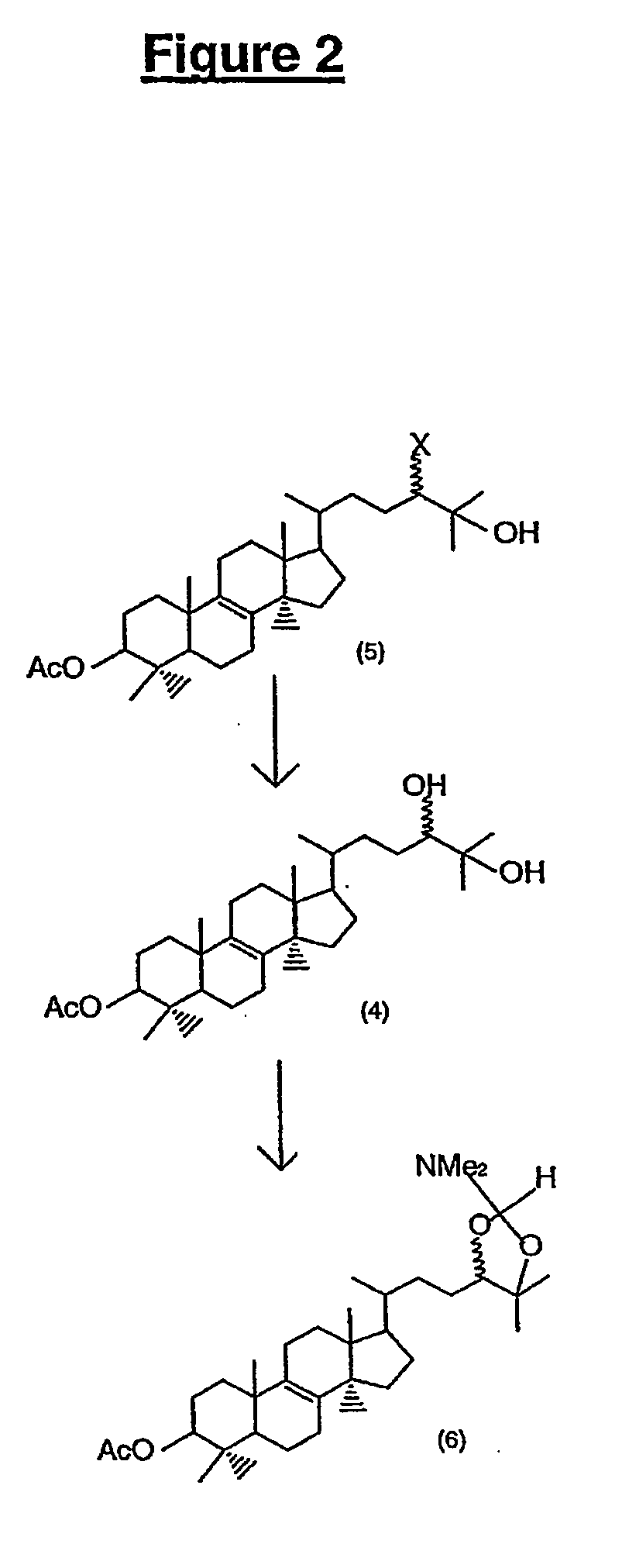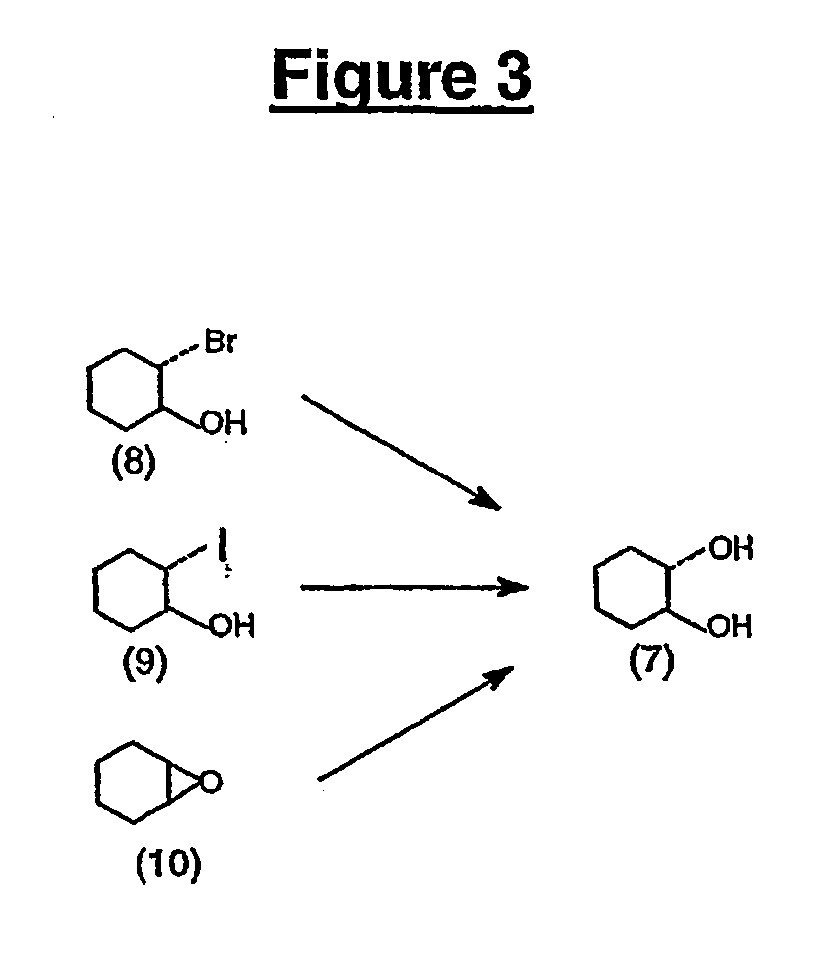Chemical synthesis
a technology of vicinal diol and synthesis method, which is applied in the field of chemical synthesis, can solve the problems of high toxic and high cost materials and achieves the effects of high cost, high cost, and high cos
- Summary
- Abstract
- Description
- Claims
- Application Information
AI Technical Summary
Benefits of technology
Problems solved by technology
Method used
Image
Examples
Embodiment Construction
Discussed below is one example of how the present invention has been used to produce lanosterol.
1H and 13C NMR spectra were recorded in chloroform-dl using a Bruker ADV DRX 400 MHz Spectrometer. Mass spectra (MS) were determined on a HP5970B spectrometer at ionising voltage of 70 eV interfaced with an ultra HP5890 gas chromatograph fitted with an HP-1 column (25 m×0.22 mm). Column chromatography was performed on Merck silica gel (70-230 mesh). Thin layer chromatography was carried out on Merck precoated silica gel 60 F254 plates (0.25 mm thick). Gas chromatography was performed on a HP5890 Gas chromatograph fitted with an ultra HP Ultra 2 column (25 m×0.32 mm). All melting points were obtained on a micro-melting point determination apparatus and were uncorrected. Lanosterol (62% purity) was purchased from Sigma and used as such. All commercial reagents were used as such, without purification.
All numbers that appear in bold relate to the figures. A number 1 is molecule number one...
PUM
| Property | Measurement | Unit |
|---|---|---|
| Electrical conductance | aaaaa | aaaaa |
| Reduction potential | aaaaa | aaaaa |
| Acidity | aaaaa | aaaaa |
Abstract
Description
Claims
Application Information
 Login to View More
Login to View More - R&D
- Intellectual Property
- Life Sciences
- Materials
- Tech Scout
- Unparalleled Data Quality
- Higher Quality Content
- 60% Fewer Hallucinations
Browse by: Latest US Patents, China's latest patents, Technical Efficacy Thesaurus, Application Domain, Technology Topic, Popular Technical Reports.
© 2025 PatSnap. All rights reserved.Legal|Privacy policy|Modern Slavery Act Transparency Statement|Sitemap|About US| Contact US: help@patsnap.com



